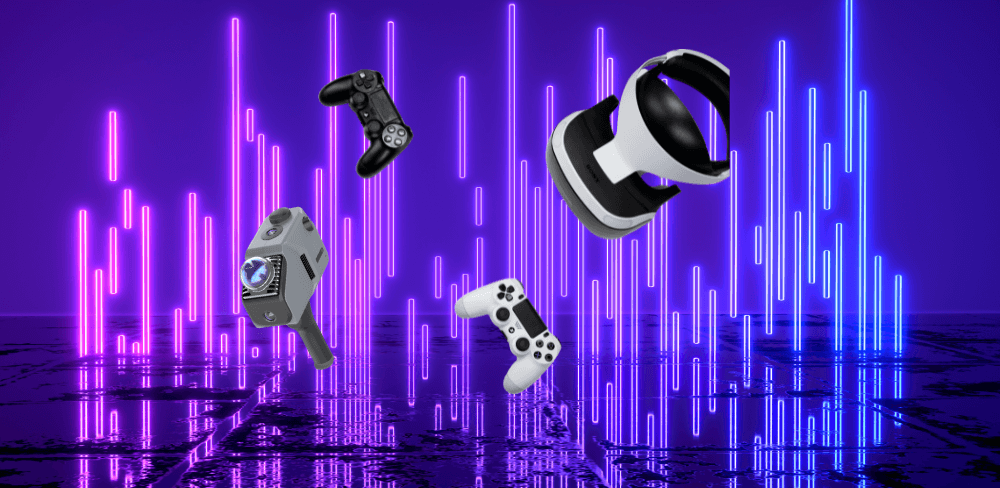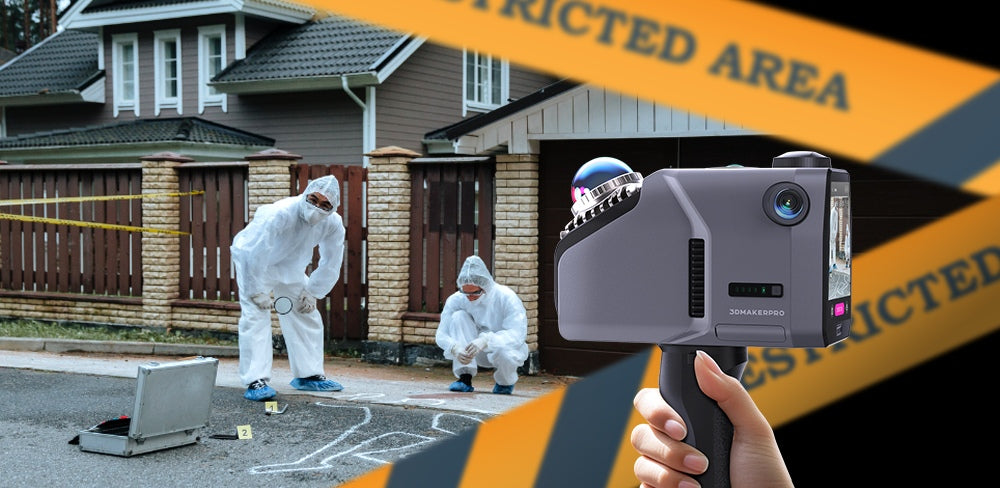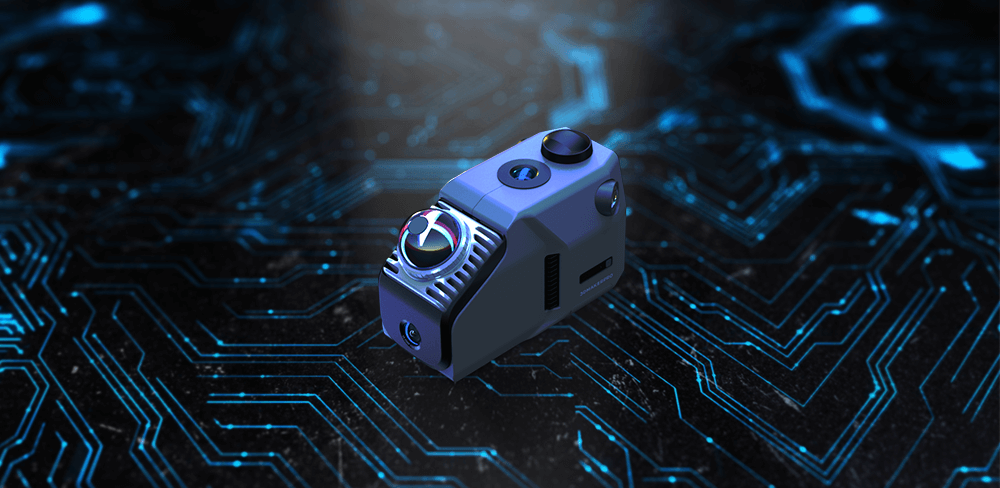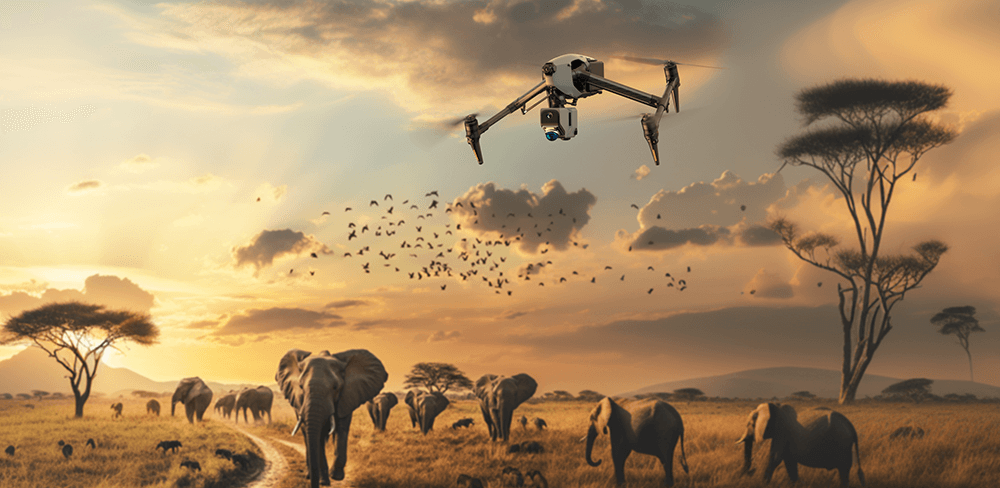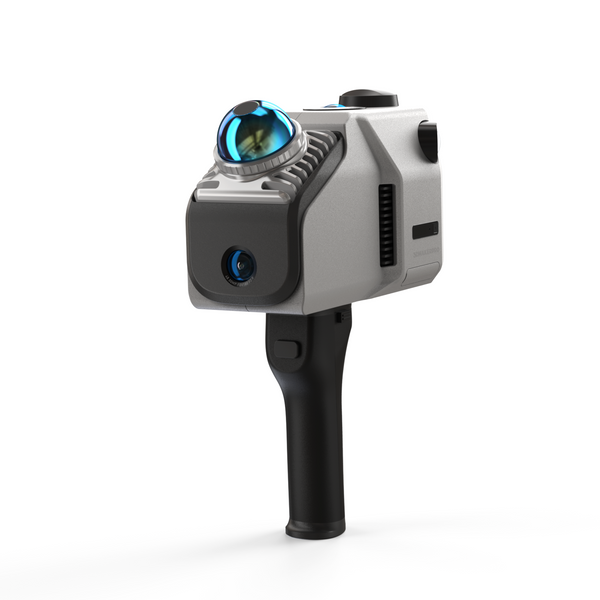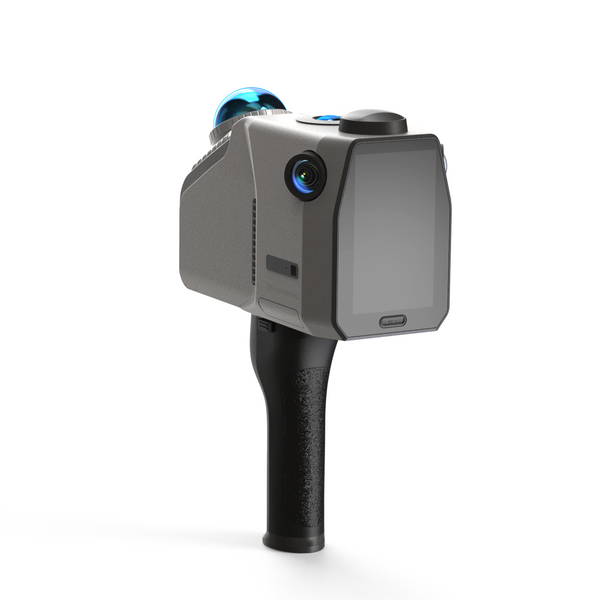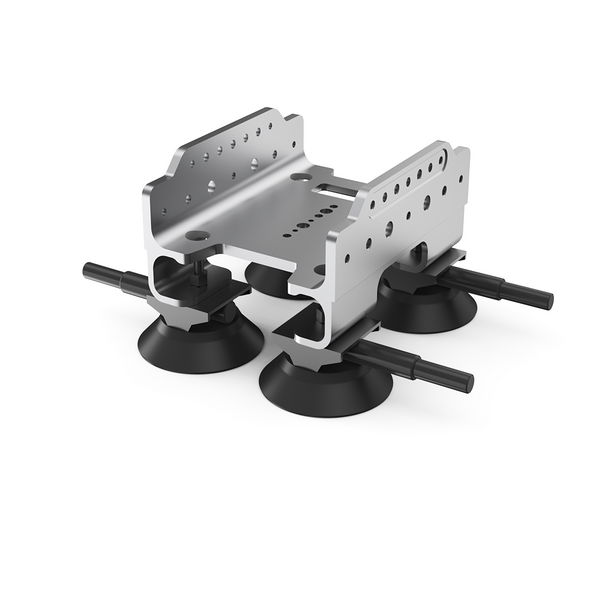In today’s fast-evolving gaming industry, realism isn’t just a preference—it’s an expectation. Gone are the days of flat textures and blocky characters. With the rise of immersive technologies like virtual reality (VR), augmented reality (AR), and real-time ray tracing, game developers are under pressure to deliver worlds that feel authentic, interactive, and alive. This is where 3D scanning for video games becomes a game-changer—literally.
Whether you’re creating ultra-realistic environments or lifelike character models, using a professional 3D scanner for game development gives you a powerful edge in speed, detail, and authenticity. In this article, we’ll explore how modern scanning workflows, particularly with tools like 3DMakerpro’s RayStudio and Eagle LiDAR Scanner, are transforming digital production pipelines. We’ll also touch on how industry players are using these techniques to build compelling, photorealistic experiences—faster than ever.
The Rise of 3D Model Scanning in Game Development
3D model scanning is the process of capturing the shape, texture, and color of real-world objects and turning them into high-fidelity digital assets. Traditionally, game assets were hand-sculpted by artists using digital tools—an often time-consuming and iterative process. Today, 3D scanning streamlines this by providing a near-instant digital twin of the object, ready for optimization and integration into game engines like Unreal Engine or Unity.
From props and weapons to entire landscapes, scanned assets reduce production time and ensure visual consistency. This process is especially valuable for high-poly modeling in cinematic cutscenes and AAA-level game graphics, where every wrinkle, dent, and texture matters.

Why Game Developers Are Turning to 3D Scanners
When you search for “3D scanner for game development,” you’re likely looking for a solution that balances quality, speed, and ease of use. Here’s why 3D scanning is becoming the de facto standard in modern digital production:
1. Hyper-Realistic Asset Creation
Scanning allows you to digitize real-world elements with sub-millimeter accuracy. Devices like LiDAR scanners can generate color point clouds and mesh geometry that capture even the most intricate details—making them ideal for scanning props, environments, and even human faces.
In fact, many studios now use 3D scanning for character development. By capturing full-body scans of actors, artists can quickly generate rig-ready game avatars with realistic proportions and facial features. When paired with motion capture or animation rigs, the result is a character that moves and feels lifelike in-game.
2. Faster Production Pipelines
Compared to manual modeling, 3D scanning significantly speeds up asset creation—often by up to 3x. With the Eagle LiDAR scanner, users can quickly capture large-scale spatial environments and process the data using software like RayStudio. The output can then be exported in formats such as OBJ or PLY, streamlining collaboration across departments and reducing the number of revision cycles. Thanks to its intelligent automation and real-time point cloud preview, even non-experts can efficiently convert real-world spaces into usable 3D assets without the need for extensive training.
3. Seamless Integration with Game Engines
Modern game engines rely on high-quality spatial data to build immersive environments. The Eagle supports widely-used formats like OBJ and PLY, allowing developers to import 3D scan data directly into platforms such as Unity, Unreal Engine, or Blender. It’s particularly well-suited for constructing large-scale scenes—such as cityscapes, architecture, or indoor layouts—where environmental detail and structure are key. While not intended for capturing fine textures on small objects, the Eagle ensures that spatial data remains consistent from scan to engine, greatly reducing the need for manual adjustments or rework during integration.
The Role of LiDAR in Game-Ready Scanning
LiDAR, or Light Detection and Ranging, is particularly useful for large-scale scans—think buildings, vehicles, or open-world terrain. A LiDAR-based 3D scanner for game development like the Eagle LiDAR from 3DMakerpro offers an all-in-one spatial capture solution with an impressive 140-meter range and up to 2cm accuracy.
With its built-in 8K HDR imaging and up to four 48MP fisheye cameras, the Eagle captures vivid textures and color depth, making it ideal for creating panoramic digital environments. It supports real-time point cloud visualization, RTK (Real-Time Kinematic) precision for GPS-based positioning, and is mountable on vehicles, drones, or backpacks—ideal for studio and field applications alike.
Real-World Examples: Scanning in Action
AAA titles like Star Wars: Battlefront and Call of Duty: Modern Warfare have famously used photogrammetry and 3D scanning to create ultra-realistic environments. But smaller studios are catching up fast—thanks to more accessible hardware and software solutions.
For instance, in World War 3 by The Farm 51, developers combined structured-light scanning with LiDAR to digitize everything from soldiers’ uniforms to military-grade weapons. Their dual-scanner workflow—leveraging both macro and micro-scale capture—allowed them to reduce asset creation time by up to 94% compared to traditional methods.
Why Color Point Clouds Matter in Game Development
Color point clouds add a layer of realism that wireframes alone can’t provide. They allow artists to capture both geometry and surface textures in one scan, serving as the foundation for lifelike materials, lighting, and shading in-game.
RayStudio’s point cloud colorization tools simplify this process further—allowing users to select environment types (indoor/outdoor), adjust transparency, and apply shadow mapping automatically. This speeds up the transition from raw scan to ready-to-use asset.
Future-Proofing Game Development with Scanning Technology
As AI and machine learning continue to evolve, we’ll likely see even more automation in tasks like mesh optimization, UV unwrapping, and texture baking. But it all starts with high-quality input—and that’s where 3D scanners and software like RayStudio shine.
By investing in robust scanning workflows, studios future-proof their pipelines and stay competitive in an industry where quality and speed are paramount.
Eagle LiDAR: A New Era of 3D Scanning for Game Development
Game development thrives on immersion—and immersion begins with realism. The Eagle LiDAR Scanner enables developers to recreate the physical world in stunning digital detail, delivering high-resolution 3D data that’s ready for integration into game engines like Unreal Engine or Unity. With up to 140m scan range and 2cm precision, Eagle is engineered to support expansive world-building, lifelike character environments, and cinematic-level asset production.
Capture Massive Game Worlds with Precision and Speed
Eagle’s professional-grade LiDAR engine delivers a scanning radius of up to 70 meters under 80% reflectivity, making it ideal for capturing open-world terrain, urban environments, and large-scale structures. With a 360°×59° field of view, it collects 30% more coverage than standard scanners—perfect for quickly generating level geometry, terrain meshes, and environmental props.
Whether you're building a dense metropolis or a sprawling natural landscape, Eagle’s ultra-wide spatial coverage ensures no detail is left behind.
48MP Cameras & 8K HDR: Ultra-Detailed Game Assets
Visual fidelity is critical in modern game development. Eagle MAX is equipped with four 48-megapixel fisheye cameras, delivering true-to-life 8K HDR imaging. This allows game artists to colorize point clouds with rich textures and realistic lighting—ideal for building high-poly models or photorealistic environments.
From gritty warzones to vibrant fantasy realms, Eagle enhances every texture with unmatched vibrancy and depth—reducing post-production time and elevating in-game realism.
3D Gaussian Splatting: From Scan to Scene in Minutes
Eagle supports advanced 3D Gaussian Splatting technology, which transforms captured images and point clouds into immersive, volumetric 3D scenes. This cutting-edge rendering method accelerates the creation of realistic environments without the heavy computational load of mesh-based models.
Compatible with Unreal Engine, Eagle’s Gaussian Splatting workflow is ideal for developers looking to build cinematic environments, virtual tours, or high-fidelity VR/AR experiences.
Real-Time Point Cloud Review for On-Site Optimization
Equipped with a built-in 3.5-inch display, Eagle allows developers to preview scans in real-time—viewing point clouds, GPS paths, or photos directly on the device. This feature ensures that critical assets or regions are fully captured before leaving the scan site, minimizing reshoots and speeding up production timelines.
Whether scanning an abandoned warehouse or a natural cave system, developers can make data-driven decisions on the spot.
RTK-Enabled Accuracy for GPS-Based Game Worlds
For geospatial game development and open-world games that mirror real-world locations, Eagle’s optional RTK module provides real-time kinematic GPS tracking. This delivers absolute point cloud positioning accuracy of 1–3 cm, ideal for aligning scanned environments with global coordinates.
RTK functionality is a must-have for developers building AR games, location-based experiences, or digital twins of physical spaces.
Effortless Integration from Scan to Game Engine
Thanks to full compatibility with RayStudio, Eagle enables a streamlined post-processing workflow, including:
- Point cloud cleanup and denoising
- Color point cloud generation
- Gaussian Splatting export (.PLY)
- Polygonal mesh export (.OBJ)
- Panoramic tour output
These files are fully compatible with leading 3D modeling and game development tools, making Eagle a central asset in any studio’s production pipeline.
Portable, Adaptable, Built for the Field
Eagle’s modular design supports multiple use cases. Mount it on a vehicle for street-level scanning, attach it to a drone for aerial capture, or use the backpack kit for mobile ground scanning. Its lightweight 1.5kg build, 12,000mAh battery, and USB-C connectivity make it a truly portable 3D scanner for game development in any environment.
Streamlined Workflow with RayStudio Software
RayStudio is more than post-processing software—it’s a complete visualization and export platform built for LiDAR-based 3D scanning for video games. Designed to integrate seamlessly with Eagle’s scan output, RayStudio supports:
- Real-time RTK data handling for higher spatial accuracy
- Colorization tools for point clouds
- Gaussian splatting export in PLY format
- Manual control over point size, shape, and lighting conditions
- Full-screen immersive previews for asset review
This not only accelerates asset development but also reduces the need for external tools or complex manual editing, making it developer-friendly for studios of all sizes.
Export-Ready Formats for Game Engine Integration
All scan data from Eagle and RayStudio can be exported in widely-supported formats including:
- 3D Color Point Cloud (PLY)
- 3D Gaussian Splatting (PLY)
- 3D Polygonal Models (OBJ)
- 3D Panoramic Tour Data (OBJ)
These formats are compatible with leading game engines like Unreal Engine, Unity, and Blender, allowing for direct import into game environments, animation pipelines, or virtual cinematography projects.
Conclusion
Game development is no longer just about imagination—it’s about precision, realism, and immersion. And 3D scanning is the bridge between the physical and virtual.
Whether you’re building a warzone, a fantasy kingdom, or a near-future metropolis, using a professional 3D scanner for game development unlocks faster workflows, higher fidelity, and more believable experiences. With tools like RayStudio and scanning systems like the Eagle LiDAR, developers can capture, process, and deploy game-ready assets with ease—bringing their vision to life in ways that were once thought impossible.
If you’re ready to elevate your digital worlds, consider exploring how advanced 3D scanning fits into your next project.


